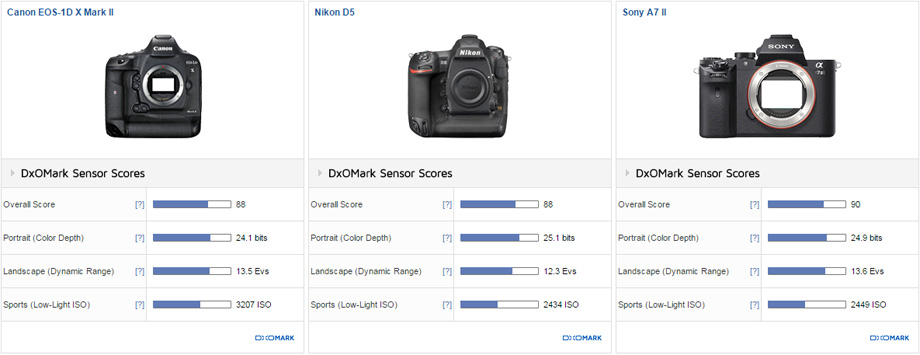07-04-2016, 05:56 AM
I am not going to spend too much time on arguing the merits of each camera. I am surprised by the 1Dx II's noise score which DXO labels "sports". This had been the domain of Nikon with the D3s, D4, and D4s.
Both models are so similar in features and close in performance that it comes down to which platform and ergonomics one prefers. Many fanboys of each manufacturer will be wasting a ton of time arguing about all this.
http://www.dxomark.com/Reviews/Canon-EOS...ass-leader

This is a well-deserved result for Canon, and this versatile sensor should prove attractive to a wide range of photographers, including those that work in multiple disciplines. The wide dynamic range at low ISOs should appeal to all photographers, but especially those using it for landscapes, and the low noise at high ISOs will also appeal to action and sports photographers. Although the new model is aimed primarily at that market, the increase in pixel count over its predecessor now matches that of the earlier EOS-1Ds Mk III, a model that’s still highly regarded for editorial and commercial work. It is not too much of a stretch to view the new EOS-1D X Mk II as the natural successor to that camera, and its wide range of capabilities, including DCI 4K video, make it look highly tempting. Sure, it would have been great to see a higher pixel count, but overall, the sensor performance offers photographers the versatility to tackle a wide range of assignments with just one camera.
Both models are so similar in features and close in performance that it comes down to which platform and ergonomics one prefers. Many fanboys of each manufacturer will be wasting a ton of time arguing about all this.
http://www.dxomark.com/Reviews/Canon-EOS...ass-leader

This is a well-deserved result for Canon, and this versatile sensor should prove attractive to a wide range of photographers, including those that work in multiple disciplines. The wide dynamic range at low ISOs should appeal to all photographers, but especially those using it for landscapes, and the low noise at high ISOs will also appeal to action and sports photographers. Although the new model is aimed primarily at that market, the increase in pixel count over its predecessor now matches that of the earlier EOS-1Ds Mk III, a model that’s still highly regarded for editorial and commercial work. It is not too much of a stretch to view the new EOS-1D X Mk II as the natural successor to that camera, and its wide range of capabilities, including DCI 4K video, make it look highly tempting. Sure, it would have been great to see a higher pixel count, but overall, the sensor performance offers photographers the versatility to tackle a wide range of assignments with just one camera.





 miley-shocked003:
miley-shocked003: